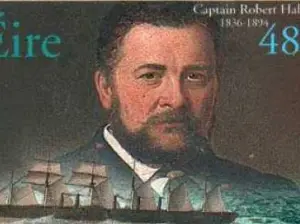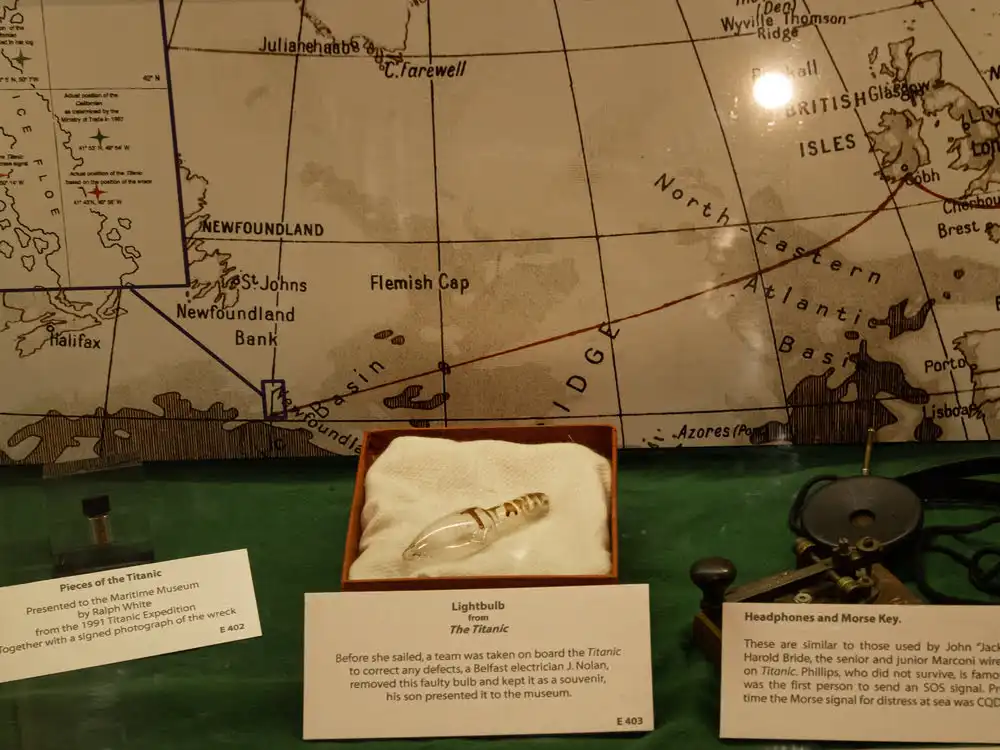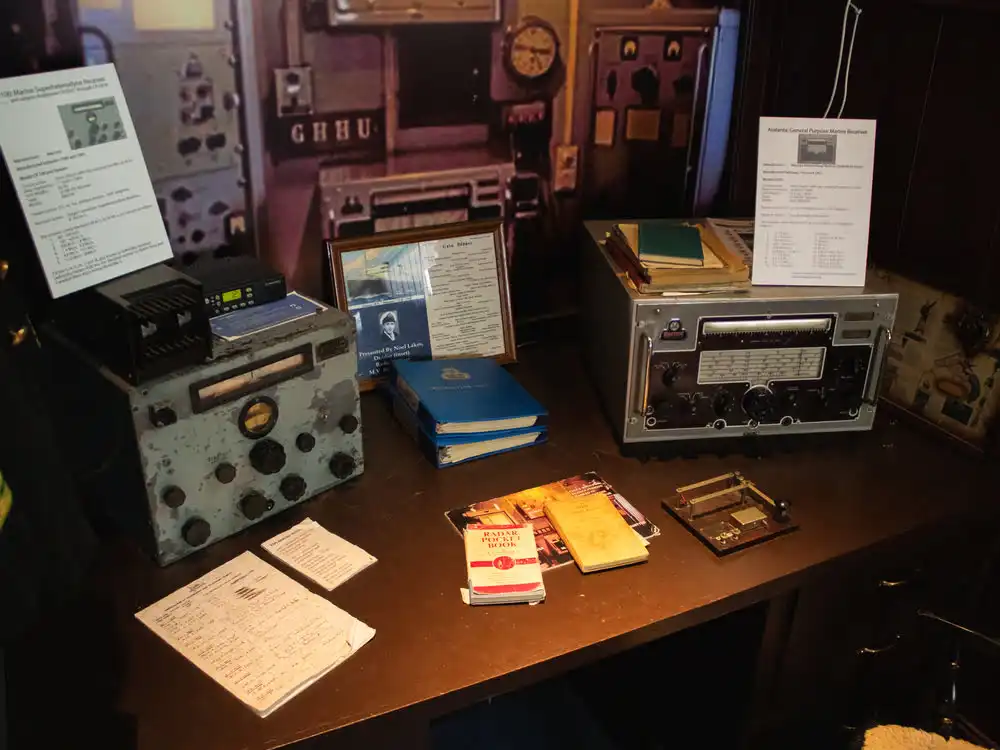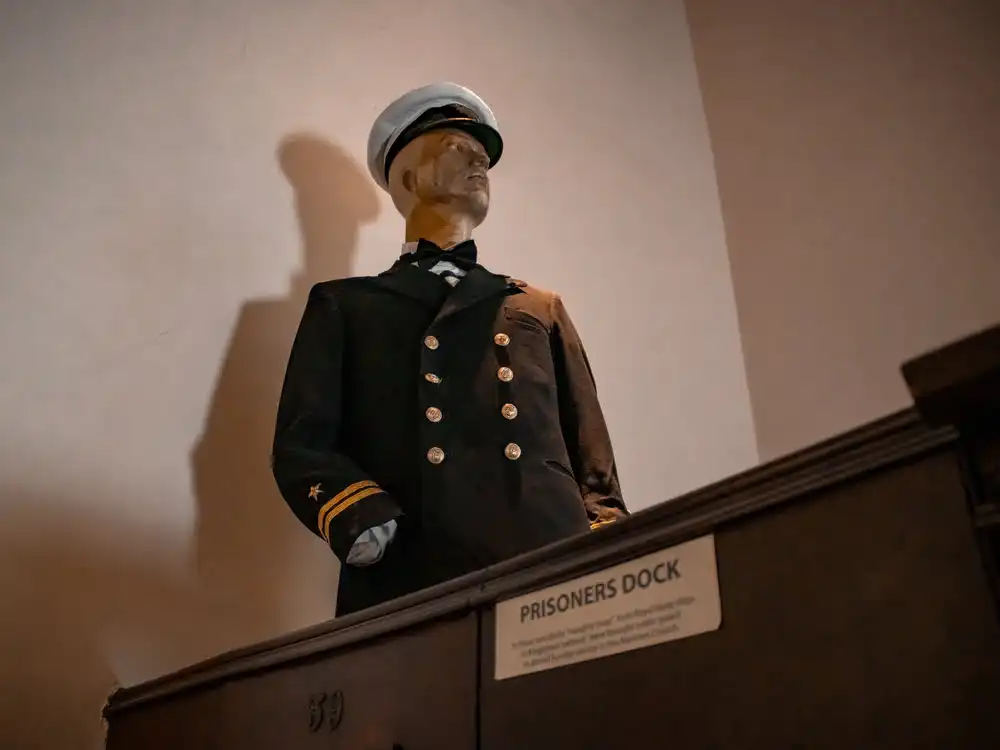
Exhibition
The Baily Optic
This working optic is the light from Baily lighthouse in Howth, North Dublin. The lens, pedestal and weight driven clockwork rotation machine went into operation on the 1st January 1902. It has two faces; one set at 180º, thus giving two flashes every revolution.
The light source from 1902 to 1908 was a 19 mantle coal gas burner and was replaced in 1908 by vaporised paraffin using a burner with 3 x 50mm mantles. In 1946 a triple 50mm regenerative burner increased the candle power to 2,000,000 from 950,000 candelas. The optic was removed in 1972 when the lighthouse was modernised.
It was disassembled on the lighthouse in Howth and brought across the bay by the Irish Lights ship, most likely on the service vessel, Isolde. It was taken to Irish Lights head office in Dún Laoghaire and brought to the Museum by truck and assembled here, thanks to the Irish Lights staff who worked as volunteers.
The light rotates and floats on a trough of mercury, supported on a cast-iron pedestal. Mercury, a dangerous substance was banned for use in lighthouse services because it was stolen during the troubles and used for bombmaking. Mercury still operates on the optic in the Museum, it is sealed with oil to prevent evaporation and checked yearly by Irish Lights engineers to ensure it is contained.

Weighing in at almost 10 tonnes, the main problem the museum had was where to house such a heavy artefact. It was suggested that it could be placed in the centre of the floor of the museum and act as a centrepiece but because of the sheer weight it was placed on the altar with a retaining wall built underneath in the basement.
The Baily was the last light of all the Lighthouse Services of Ireland that was automated in the late 1990s. Irish Lighthouse Services is responsible for the lighthouses in the 32 counties of Ireland, giving it cross border jurisdiction on the lights in the North.
Come and view the actual optic as depicted by James Joyce in ‘Ulysses’ (1922)





